Abstract
Erythritol uptake and metabolism were compared in wild-type mycelium and a dome morphological mutant of the wood-rotting mushroom Schizophyllum commune. Wild-type mycelium utilized glucose, certain hexitols, and pentitols including ribitol, as well as d-erythrose, erythritol, and glycerol as sole carbon sources for growth. The dome mutant utilized all of these compounds except d-erythrose and erythritol. Erythritol- or glycerol-grown wild-type mycelium incorporated erythritol into various cellular constituents, whereas glucose-grown cells lagged considerably before initiation of erythritol uptake. This acquisition was inhibited by cycloheximide. Dome mycelium showed behavior similar to wild-type in uptake of erythritol after growth on glucose or glycerol, except that erythritol was not further catabolized. Enzymes of carbohydrate metabolism were compared in cell extracts of glucose-cultured wild-type mycelium and dome. Enzymes of hexose monophosphate catabolism, nicotinamide adenine dinucleotide (NAD)-dependent sugar alcohol dehydrogenases, and reduced nicotinamide adenine dinucleotide phosphate (NADPH)-coupled erythrose reductase were demonstrated in both. The occurrence of erythrose reductase was unaffected by the nature of the growth carbon source, showed optimal activity at pH 7, and generated NAD phosphate and erythritol as products of the reaction. Glycerol-, d-erythrose-, or erythritol-grown wild-type mycelium contained an NAD-dependent erythritol dehydrogenase absent in glucose cells. Erythritol dehydrogenase activity was optimal at pH 8.8 and produced erythrulose during NAD reduction. Glycerol-growth of dome mycelium induced the erythritol uptake system, but a functional erythritol dehydrogenase could not be demonstrated. Neither wild-type nor dome mycelium produced erythritol dehydrogenase during growth on ribitol. Erythritol metabolism in wild-type cells of S. commune, therefore, involves an NADPH-dependent reduction of d-erythrose to produce erythritol, followed by induction of an NAD-coupled erythritol dehydrogenase to form erythrulose. A deficiency in erythritol dehydrogenase rather than permeability barriers explains why dome cannot employ erythritol as sole carbon source for mycelial growth.
Full text
PDF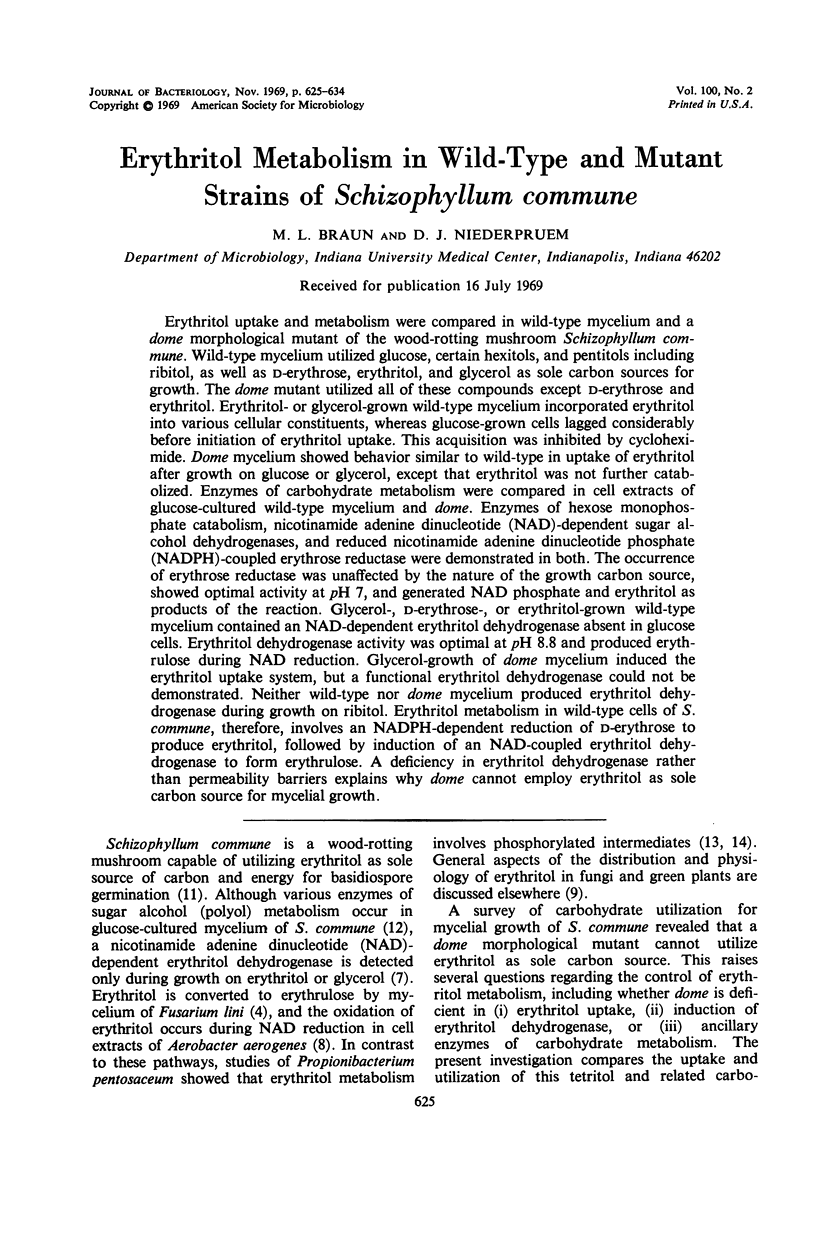
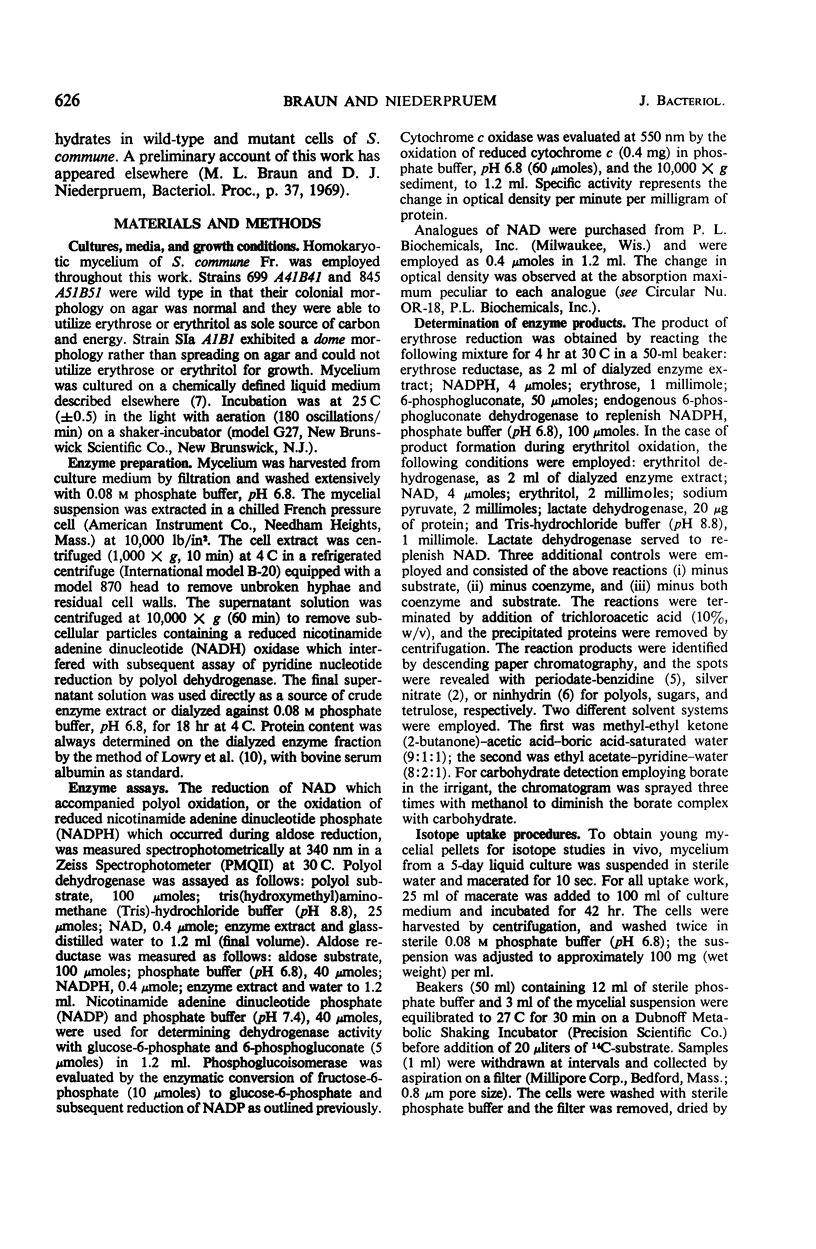
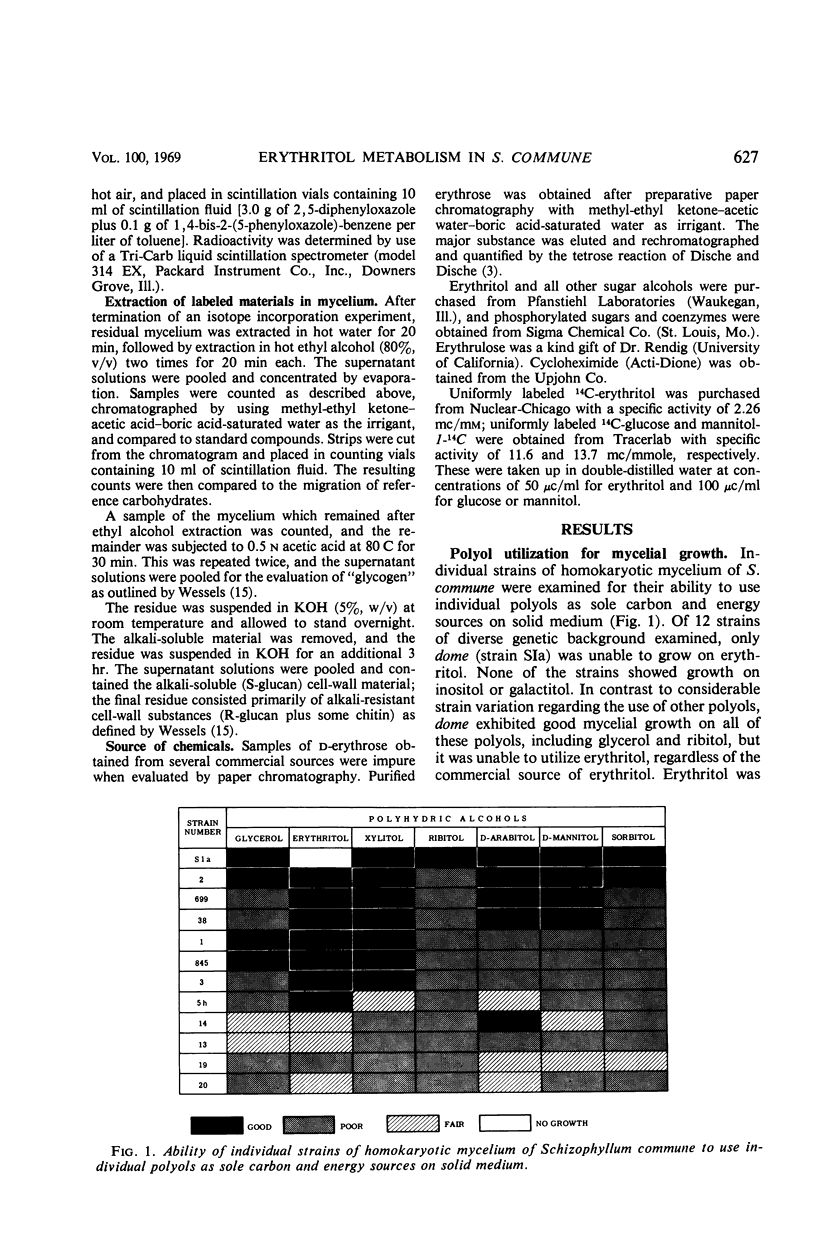
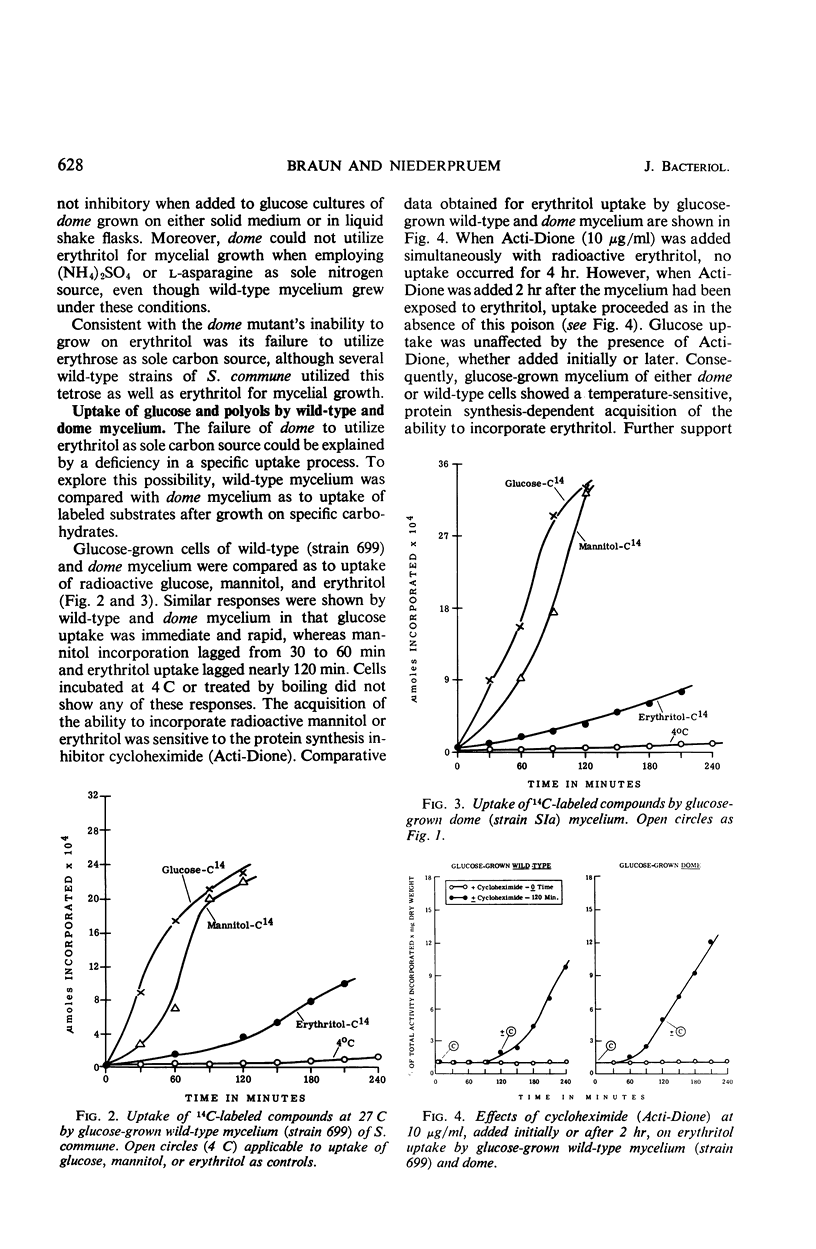
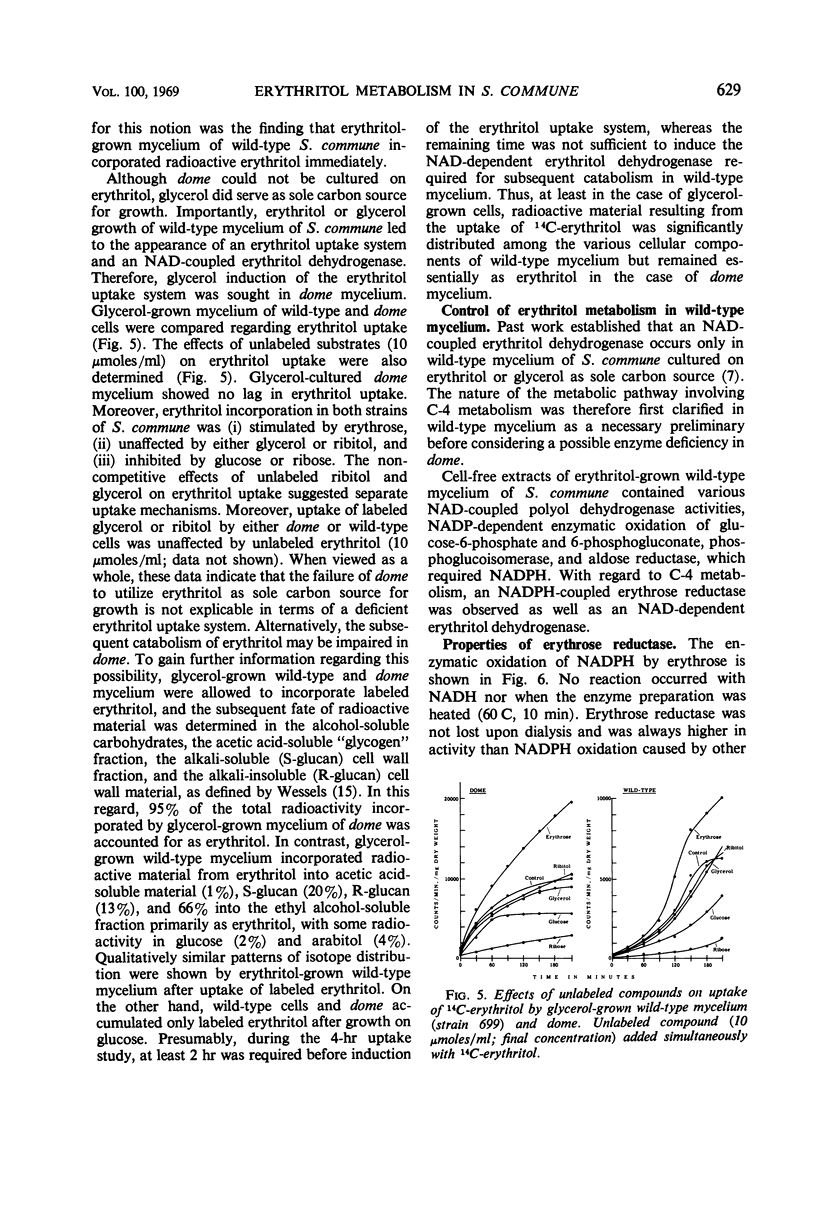
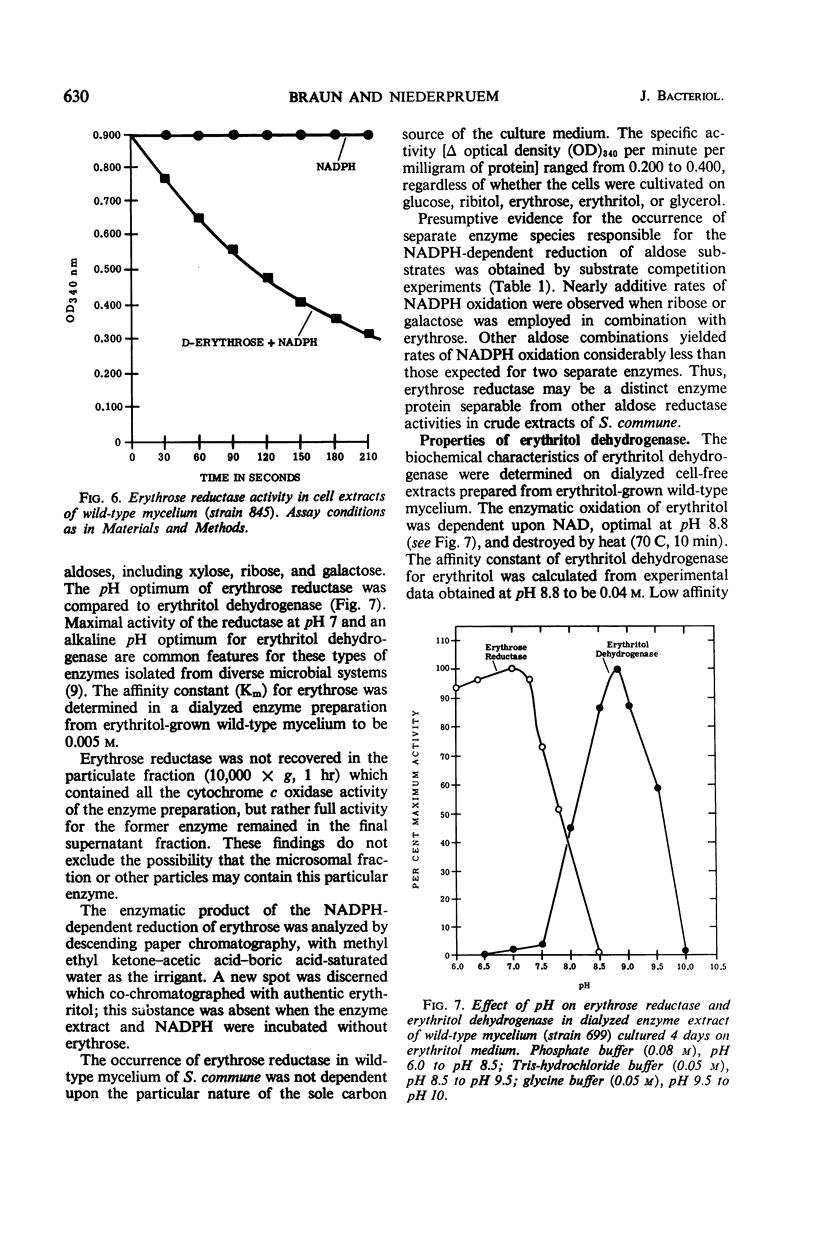
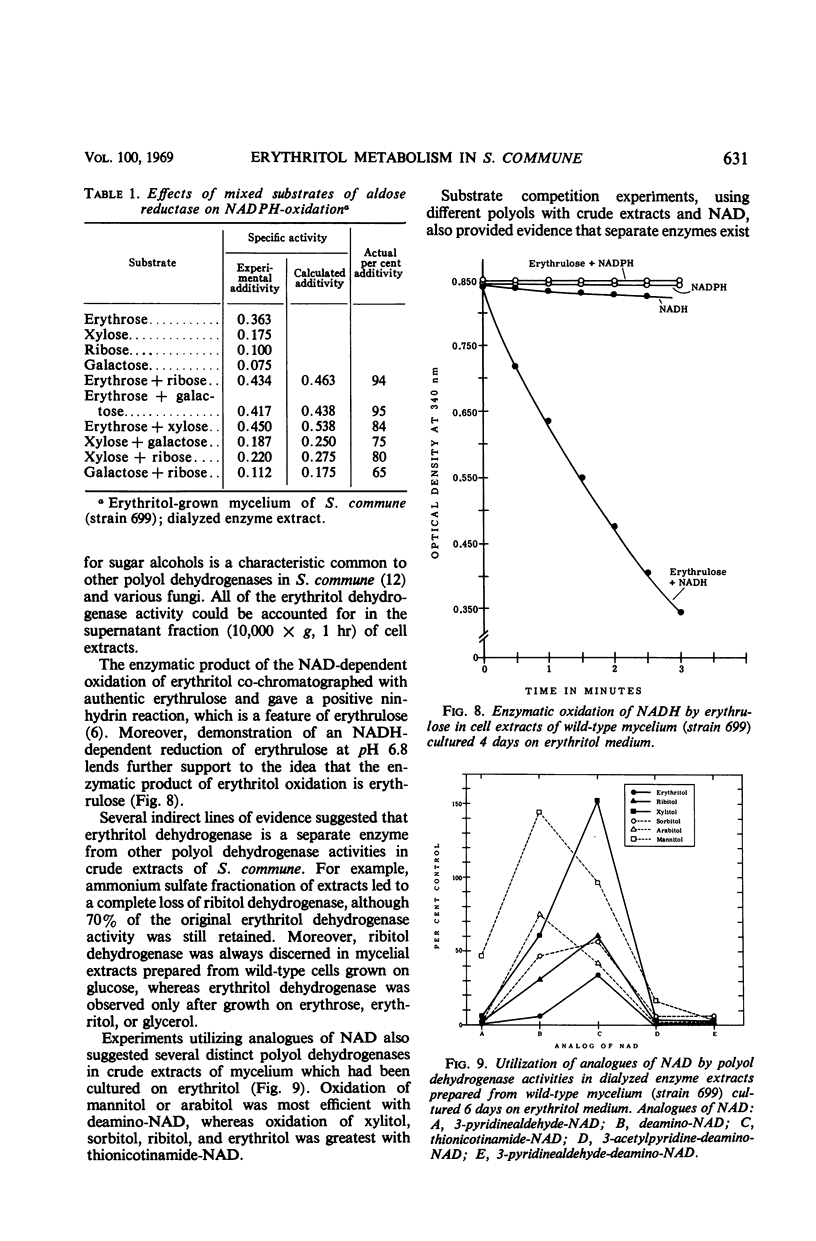
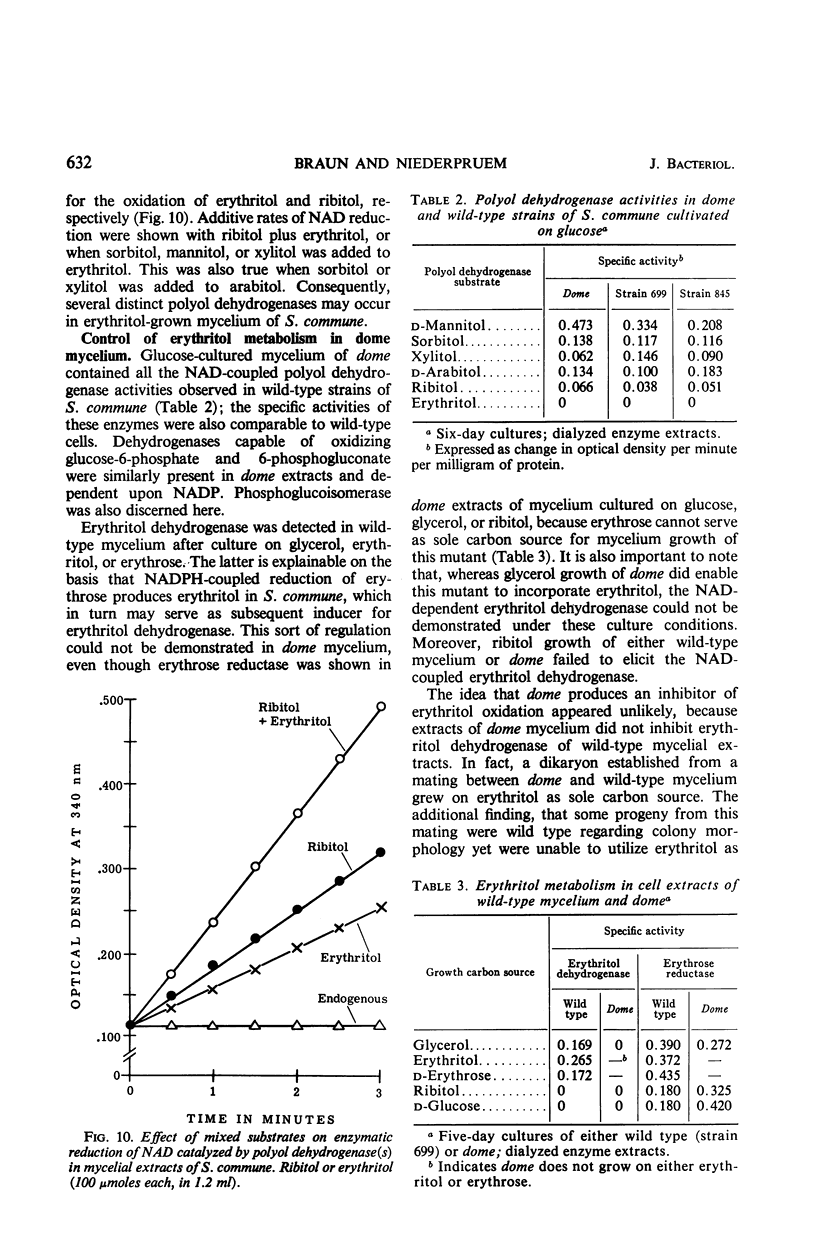
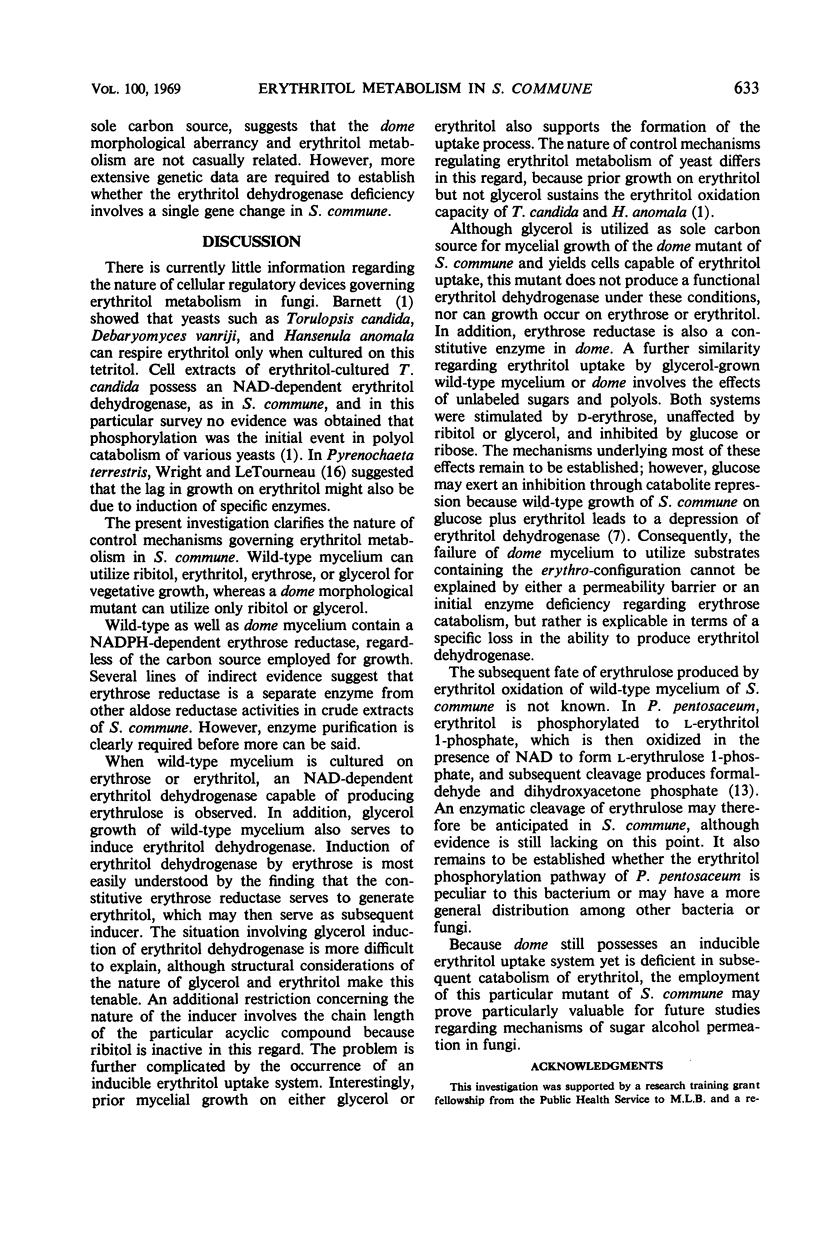
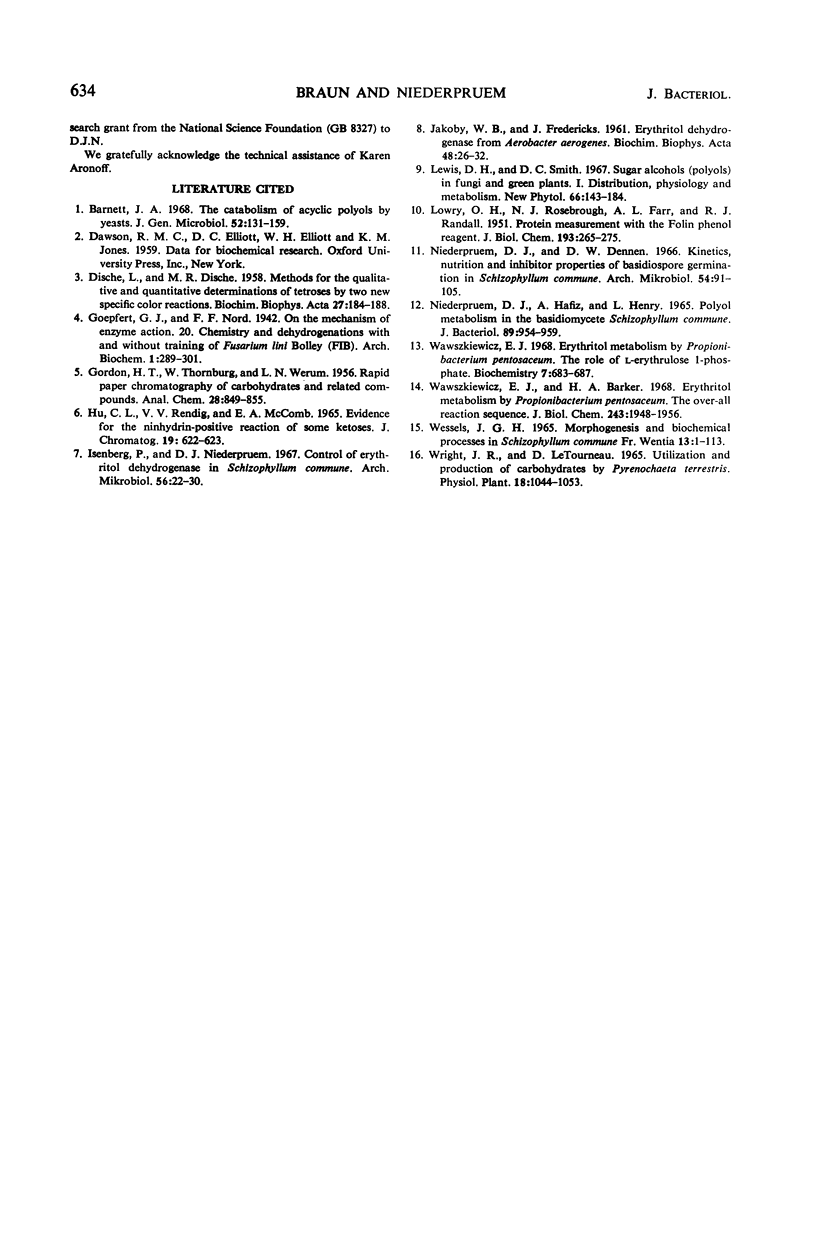
Selected References
These references are in PubMed. This may not be the complete list of references from this article.
- DISCHE Z., DISCHE M. R. Methods for the qualitative and quantitative determinations of tetroses by two new specific color reactions. Biochim Biophys Acta. 1958 Jan;27(1):184–188. doi: 10.1016/0006-3002(58)90307-x. [DOI] [PubMed] [Google Scholar]
- Hu C. L., Rendig V. V., Mc Comb E. A. Evidence for the ninhydrin-positive reaction of some ketoses. J Chromatogr. 1965 Sep;19(3):622–623. doi: 10.1016/s0021-9673(01)99512-3. [DOI] [PubMed] [Google Scholar]
- Isenberg P., Niederpruem D. J. Control of erythritol dehydrogenase in Schizophyllum commune. Arch Mikrobiol. 1967 Feb 1;56(1):22–30. doi: 10.1007/BF00406051. [DOI] [PubMed] [Google Scholar]
- JAKOBY W. B., FREDERICKS J. Erythritol dehydrogenase from Aerobacter aerogenes. Biochim Biophys Acta. 1961 Mar 18;48:26–32. doi: 10.1016/0006-3002(61)90511-x. [DOI] [PubMed] [Google Scholar]
- LOWRY O. H., ROSEBROUGH N. J., FARR A. L., RANDALL R. J. Protein measurement with the Folin phenol reagent. J Biol Chem. 1951 Nov;193(1):265–275. [PubMed] [Google Scholar]
- NIEDERPRUEM D. J., HAFIZ A., HENRY L. POLYOL METABOLISM IN THE BASIDIOMYCETE SCHIZOPHYLLUM COMMUNE. J Bacteriol. 1965 Apr;89:954–959. doi: 10.1128/jb.89.4.954-959.1965. [DOI] [PMC free article] [PubMed] [Google Scholar]
- Wawszkiewicz E. J., Barker H. A. Erythritol metabolism by Propionibacterium pentosaceum. The over-all reaction sequence. J Biol Chem. 1968 Apr 25;243(8):1948–1956. [PubMed] [Google Scholar]
- Wawszkiewicz E. J. Erythritol metabolism by Propionibacterium pentosaceum. The role of L-erythrulose 1-phosphate. Biochemistry. 1968 Feb;7(2):683–687. doi: 10.1021/bi00842a025. [DOI] [PubMed] [Google Scholar]


